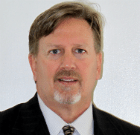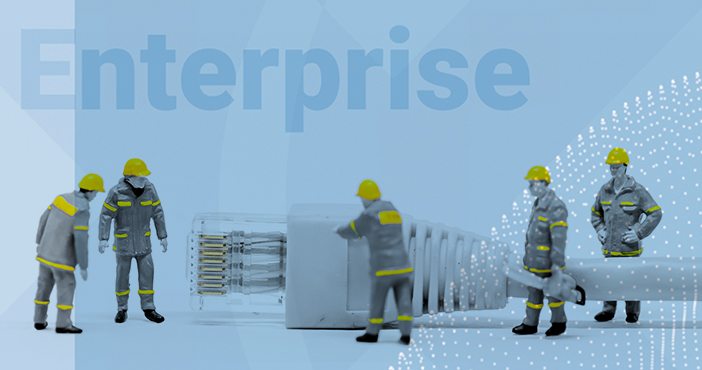The middleprise – defined as commercial venues with up to 500,000 sq. ft. of space – has long been underserved when it comes to solutions that solve in-building cellular coverage problems.
Systems integrators in this market have consistently run into the same pain points, regardless of the industry in which they specialize. Active DAS solutions, the gold standard for uniform cellular service inside large venues, are too costly per square foot for the middleprise budget. They also take too long to install – up to 18 months – especially when one considers that many businesses today depend on their mobile phones for mission critical operations, like sales calls.
Passive DAS solutions (boosters), on the other hand, generally fit the right price point for the middleprise budget and are faster to install. However, systems integrators that commission a passive DAS walk away from installs expecting calls from dissatisfied customers due to issues with the signal attenuation and strength limitations of this technology.

Inevitably, it rests on the shoulders of systems integrators to install consistent, dependable and repeatable in-building cellular coverage solutions that deliver a predictable result that fits within the middleprise budgets and meets their needs.
As each middleprise deployment is unique, integrators are relied on to determine the best technology for each job, and creative approaches to solving specific problems.
When RCS Wireless Technology, headquartered in North Carolina, was contacted by Lightstone Group, a real estate investment company, to fix the wireless coverage issues in a 10-story New York apartment building under construction, they needed to move fast.
“At least a dozen people refused to lease apartments because they couldn’t get an indoor cellular signal, and those who did move in were frustrated with their inability to make calls from inside their homes,” says Steven Klingensmith, an RCS solution manager.
As RCS had post-installation problems with passive DAS systems installed at other locations, they wanted to install a more reliable technology. According to Klingensmith, “There are so many points of failure in a passive DAS that could be causing the problem – cables, splitters, connectors – fixing one point doesn’t necessarily solve the real problem.”
So RCS chose to install Cel-Fi QUATRA, an Active DAS Hybrid that self-optimizes and uses Nextivity’s intelligent WAVE platform for easy provisioning and management via a smart phone or cloud portal, making set up and trouble-shooting much faster and simpler. The result is that residents can now make phone calls from their apartments for the first time, and RCS is confident they installed a solution that works.
“Cel-Fi QUATRA gives us peace of mind because we know it works well. I can honestly say that I am more excited about this product than anything I have sold previously,” says Klingensmith. “It gives more coverage with a smaller equipment footprint. This means we can install larger jobs quicker, invoice more quickly, and move on to other jobs”

Minnesota-based KonectaUSA utilized the Cel-Fi WAVE platform during a Cel-Fi QUATRA installation to determine the best signal quality and strength inside a 376,000 sq. ft. rural plant of a major beverage manufacturer. While there was signal outdoors, the signal didn’t penetrate inside due to a combination of cell tower location and metal roof on the building.
“Just by moving the antenna from the back of the building to the front made a major difference in signal quality,” says Mike Bozyk, KonectaUSA co-founder. “In fact, it resulted in better coverage on the inside of the plant than on the outside.”
The client is very happy with the results, and KonectaUSA has since installed Cel-Fi QUATRA at two more of their plants.
Texas-based SignalBoosters.com, another well-established integrator, completed about a dozen Cel-Fi QUATRA installations within the first six months of adding the Active DAS Hybrid to its portfolio of solutions. Brandon Davis, the company’s vice president of enterprise, explained that it’s quickly becoming a go-to solution for their firm because “Cel-Fi QUATRA is cost efficient, easier to manage, and performs at a significantly higher level than other solutions on the market.”
In one case, the company was contracted by an international hotel chain to fix in-building coverage problems at its San Antonio property. Staff in their human resources, operations, and housekeeping departments couldn’t use their cell phones in their offices located in the hotel’s two sub-basement floors.
The basement floors were separated by cement. The walls were also cement, and featured steel fire doors. “Normally this would present challenges,” says Davis. “Most solutions offer signal strength in the 70db to 72db range, but because of the 100db strength of Cel-Fi QUATRA, we were able to overcome these obstacles more easily.”
Like all leading systems integrators, SignalBoosters.com strives to deliver the best solutions for their customers at a price point that fits their budgets. One of the ways the company helps keep the cost down is by working with their customers’ internal IT teams. As Cel-Fi QUATRA uses category cable (instead of fiber or COAX cable), cabling can often be done by the customer’s IT department.
“Most IT professionals are familiar with Cat6 cables, so if we’re not scheduled to install at a customer site for a couple of weeks, the internal IT team can lay the cable,” says Davis. “Then when we get there, we can complete the installation fairly quickly. That saves the customer money and enables us to move on to our next job more quickly.”
These are just a few examples that demonstrate the vital role systems integrators play in delivering a solution that solves in-building cellular coverage problems of the middleprise, at a price point they can afford and within a timeframe that meets their needs.
From Nextivity’s standpoint, the systems integrators are the front-line heroes of the middleprise IBW ecosystem.
For more details on how RCS Wireless Technology, KonectaUSA, and SignalBoosters.com creatively solved the cellular service problems with Cel-Fi QUATRA for these and other customers, download the case studies.
ABOUT THE AUTHOR:

Curtis Burkhart is Senior Sales Director, North America at Nextivity. In this role, he is responsible for developing integrator relationships in the North American in-building wireless market. While Curtis is a seasoned sales executive who has been focused on B2B technology across multiple vertical markets for most of his career, since 2011 he has been immersed in the in-building wireless technology industry, working closely with businesses in mid- to enterprise-size markets to optimize their indoor cellular coverage.

